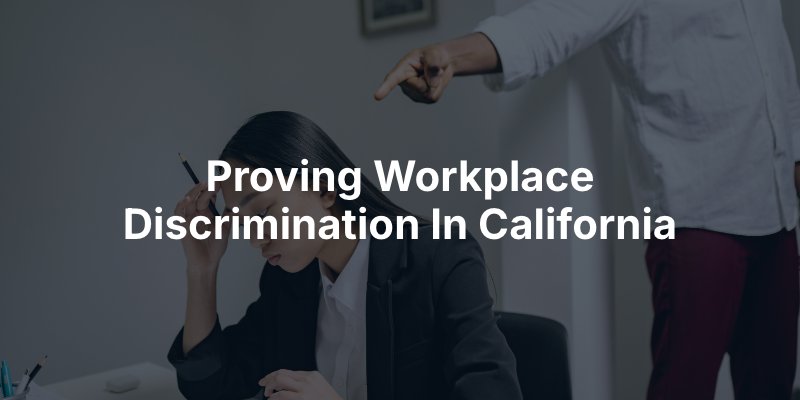Workplace discrimination is illegal under both federal and California law, but proving it can be challenging. If you believe you have experienced workplace discrimination, it is essential to understand what constitutes illegal conduct and how to build a strong case. Contact our Orange County workplace discrimination attorneys today. Call us at (949) 379-6250.

In California, the Fair Employment and Housing Act (FEHA) prohibits employers from discriminating against employees or job applicants based on protected characteristics such as race, gender, age (over 40), disability, religion, national origin, sexual orientation, and more. Discriminatory acts can include:
To prove discrimination, the employee must show that they were treated differently from others in similar situations due to a protected characteristic.
Proving discrimination typically involves showing either direct evidence or circumstantial evidence.
Direct evidence includes explicit remarks, emails, or written documents showing bias. For example, if a supervisor says, “You’re too old for this role,” or “We’re looking for younger energy,” this can be strong evidence of age discrimination in Orange County. However, such direct admissions are rare.
Most discrimination claims rely on circumstantial evidence. Under California law, the McDonnell Douglas burden-shifting test is commonly used. It involves three steps:
To strengthen your case, gather as much documentation as possible. Useful evidence includes:
Keeping detailed, written records of what happened and when can significantly increase your chances of success.
Discrimination should never be tolerated. If you suspect your employer acted unfairly based on who you are, legal help is available to protect your rights and hold them accountable. Since proving discrimination can be complex, hiring an experienced Orange County Employment Law Attorney significantly increases your chances of success. They can assess your situation, help you gather evidence, and file a complaint with the Civil Rights Department (CRD) or the Equal Employment Opportunity Commission (EEOC). If necessary, your workplace discrimination lawyer in Orange County can represent you in a lawsuit seeking compensation for lost wages, emotional distress, and possibly punitive damages. Contact us to discuss your legal options today.